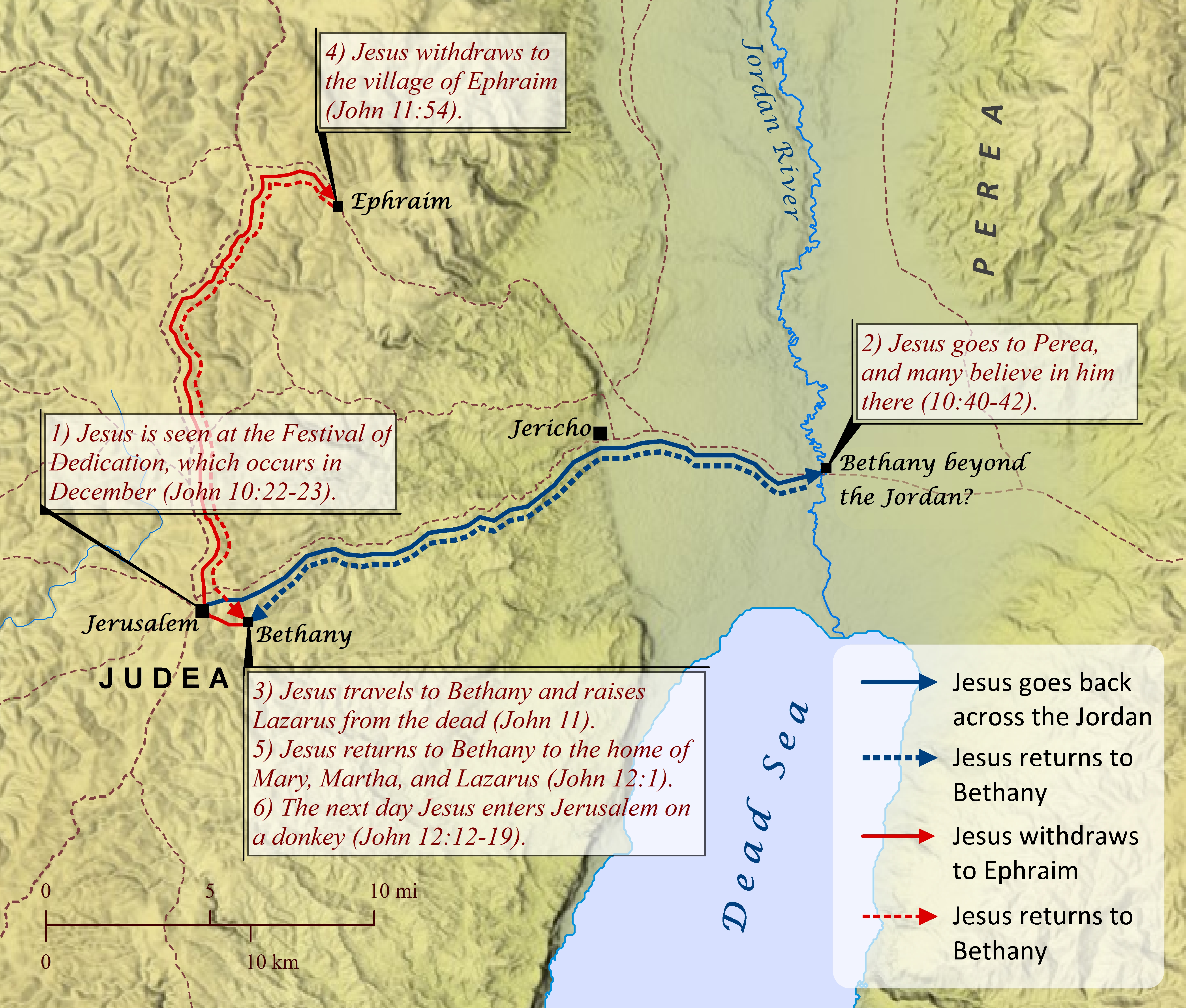Note: This view shows ‘verses’ which are not natural language units and hence sometimes only part of a sentence will be visible—click on any Bible version abbreviation down the left-hand side to see the verse in more of its context. Normally the OET discourages the reading of individual ‘verses’, but this view is only designed as a tool for doing comparisons of different translations—the older translations are further down the page (so you can read up from the bottom to trace the English translation history). The OET segments on this page are still very early looks into the unfinished texts of the Open English Translation of the Bible—please double-check these texts in advance before using in public.
AICNT So the Jews sought him at the feast and said, “Where is that man?”
OEB The authorities were looking for him at the Festival and asking “Where is he?”;
LSB So the Jews were seeking Him at the feast and saying, “Where is He?”
WEBBE The Jews therefore sought him at the feast, and said, “Where is he?”
WMBB The Judeans therefore sought him at the feast, and said, “Where is he?”
NET So the Jewish leaders were looking for him at the feast, asking, “Where is he?”
LSV the Jews, therefore, were seeking Him in the celebration, and said, “Where is that One?”
FBV Now at the festival the Jewish leaders were searching for him and kept on asking, “Where is he?”
TCNT Now the Jews were looking for him at the feast, saying, “Where is that man?”
T4T At the celebration, the Jewish leaders were looking for him. They were asking people, “Has Jesus come?”
LEB So the Jews were looking for him at the feast, and were saying, “Where is he?”
BBE At the feast the Jews were looking for him and saying, Where is he?
Moff At the festival the Jews were in quest of him, saying, "Where is he?"
Wymth Meanwhile the Jews at the Festival were looking for Him and were inquiring, "Where is he?"
ASV The Jews therefore sought him at the feast, and said, Where is he?
DRA The Jews therefore sought him on the festival day, and said: Where is he?
YLT the Jews, therefore, were seeking him, in the feast, and said, 'Where is that one?'
Drby The Jews therefore sought him at the feast, and said, Where is he?
RV The Jews therefore sought him at the feast, and said, Where is he?
SLT Then the Jews sought him in the festival, and said, Where is he.
Wbstr Then the Jews sought him at the feast, and said, Where is he?
KJB-1769 Then the Jews sought him at the feast, and said, Where is he?
KJB-1611 Then the Iewes sought him at the feast, and said, Where is he?
(Modernised spelling is same as from KJB-1769 above)
Bshps Then sought hym the Iewes at the feaste, and sayde, where is he?
(Then sought him the Yews at the feaste, and said, where is he?)
Gnva Then the Iewes sought him at the feast, and saide, Where is hee?
(Then the Yews sought him at the feast, and said, Where is he? )
Cvdl Then sought him ye Iewes at ye feast, and sayde: Where is he?
(Then sought him ye/you_all Yews at ye/you_all feast, and said: Where is he?)
TNT Then sought him the Iewes at the feast and sayde: Where is he?
(Then sought him the Yews at the feast and said: Where is he? )
Wycl Therfor the Jewis souyten hym in the feeste dai, and seiden, Where is he?
(Therefore the Yews sought him in the feast day, and said, Where is he?)
Luth Da suchten ihn die Juden am Fest und sprachen: Wo ist der?
(So were_looking_for him/it the Yuden in/at/on_the Fest and said: Where is der?)
ClVg Judæi ergo quærebant eum in die festo, et dicebant: Ubi est ille?
(Yudahi therefore they_were_looking_for him in/into/on day festo, and they_said: Where it_is he/that_one? )
UGNT οἱ οὖν Ἰουδαῖοι ἐζήτουν αὐτὸν ἐν τῇ ἑορτῇ, καὶ ἔλεγον, ποῦ ἐστιν ἐκεῖνος?
(hoi oun Youdaioi ezaʸtoun auton en taʸ heortaʸ, kai elegon, pou estin ekeinos?)
SBL-GNT οἱ οὖν Ἰουδαῖοι ἐζήτουν αὐτὸν ἐν τῇ ἑορτῇ καὶ ἔλεγον· Ποῦ ἐστιν ἐκεῖνος;
(hoi oun Youdaioi ezaʸtoun auton en taʸ heortaʸ kai elegon; Pou estin ekeinos;)
RP-GNT Οἱ οὖν Ἰουδαῖοι ἐζήτουν αὐτὸν ἐν τῇ ἑορτῇ, καὶ ἔλεγον, Ποῦ ἐστιν ἐκεῖνος;
(Hoi oun Youdaioi ezaʸtoun auton en taʸ heortaʸ, kai elegon, Pou estin ekeinos;)
TC-GNT Οἱ οὖν Ἰουδαῖοι ἐζήτουν αὐτὸν ἐν τῇ ἑορτῇ, καὶ ἔλεγον, Ποῦ ἐστιν ἐκεῖνος;
(Hoi oun Youdaioi ezaʸtoun auton en taʸ heortaʸ, kai elegon, Pou estin ekeinos; )
Key for above GNTs: yellow:punctuation differs (from our SR-GNT base).
